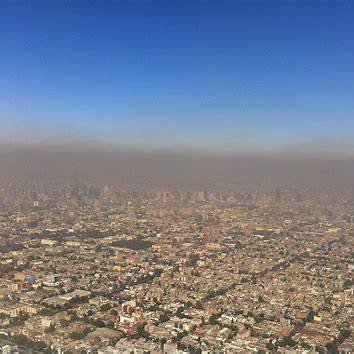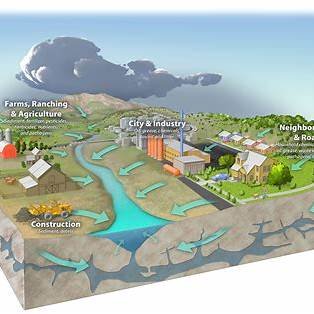The making of ‘Bring Our World Back to Life
How WWF communicates about what we do and what we stand for, it matters. It was a really important campaign. It required a great deal of experimentation and collaboration, hopefully a visual feast that nobody had seen before. The limitations actually created the result that I think everyone’s super proud of and it’s super exciting to see that come to life.
Time is running out – can we bring our world back to life before it’s too late? That’s the opening line to our ad. The statistics from our latest Living Planet Report are terrifying: on average, 70% drop in global wildlife populations since 1970. We know, because the evidence tells us, that conservation is no longer enough.
At WWF, we’re really lucky to have such a cherished brand – it’s iconic, the panda is recognised by so many people. But our work takes us far beyond looking after and conserving precious species. Our mission and our strategy is about restoring the nature that’s been lost, and reversing the declines that we’ve seen if we are going to have a thriving planet.
Not just for those precious species – the pandas, the elephants, the tigers – but for everyone. That’s why we’ve developed ‘Bringing our World Back to Life’ – it’s a better expression of what we do. It speaks to the jeopardy that all is not well, that we know that there is a crisis on for our world, but it also speaks to the hope.
This film is something that followed on quite naturally for that. The race idea was actually… I think it’s a very direct metaphor. You’re racing towards something hopeful but it’s still a race. There’s a sort of active role for everyone to play and a sense of urgency. We wanted to embody an everyday human running against this monster, this CG monster, that is comprised of all these elements that are a danger and a threat to the natural world around us.
Therein lay the parallel of us, proxied in through this everyday runner, running against our own ills. Advertising scripts are really interesting things because you can write the most brilliant, the most perfect metaphor but then you’re always working within the constraints of budget. We just started brainstorming about how we can actually bring this concept to life, how can we totally rethink it.
We realised that there’s some new technology in the Artificial Intelligence space that we could use in concert with some simpler tricks. The AI model that we used was called ‘Disco Diffusion’. One of the other things that we had to our advantage was time. It allowed us to experiment a lot with things in the AI technology and how we could mess with that, and play with it, and manipulate it.
We had to design 6 different AI filters. The first one was burning, fires and forest fires. Air pollution and smog. Melting ice caps. It was very hard to give prompts to try to get the AI to do melting ice caps without it just looking pretty. And then we also had overlogging and deforestation. Sea pollution, overfishing.
That was a very very tricky one to give that feeling and still see through that image that we’re looking at two characters running. In fact, there was a funny moment where one of our runners literally just turned into a little fish, that was running on its tail. That didn’t make it in the final cut.
Then we had a positive AI pass and it’s much more about regeneration and the growing of nature. Because of the limitations we actually were able to design something more organic, that feels a little bit more unique. I was told several times it’s impossible. It’s testament to everyone’s stubbornness that we got it.
That was one of the fun things – to see a limitation actually become one of the things that define the look and the feel of the project. The first athlete is Jessica Hunter. Our second athlete is Melissa, she is what we call ‘Destruction’. So, it was a fine balance of finding really talented athletes that were strong runners but also could give us the emotional performance that we needed.
And it worked really well because, actually, on the shoot, they basically ran all day for about two days straight. We didn’t shoot anything out in a studio. We shot everything on a real racetrack, and out in the wilderness. The overall goal was to create this idea of running from somewhere dystopian to somewhere lush and kind of hopeful.
We shot in two locations. The first location of the racetrack was shot in Crystal Palace. What we loved about Crystal Palace is, it was already quite dilapidated. So, when we moved on to the ‘green’ location when the world is on its way back to life, we wanted there to be a good track for running down but we needed there to be a sort of good combination of different types of trees, and it to feel really green but also verdant.
Can we really bring our world back to life? And if we’re honest, it’s a question we’re all asking ourselves. We have to. I think it leads back to the original intent behind the brief. If we were to remain cynical, then we’re definitely doomed. As David Attenborough said: “All we need we need is the will.
” Our supporters really believe that we can do this, and we really believe in them. They’re not just adopting a tiger; they’re helping to bring our forests back to life. It’s really important that we recognise that there are solutions. We know that when you give nature a chance to recover, it can. We know we need our world leaders to step up.
Stop breaking the promises that they made for the environment, and really start acting on the solutions. The race is definitely on, but we know it’s a race that we can win. We can bring our world back to life.
Sir David Attenborough’s message of hope at COP26 2024
A new industrial revolution powered by millions of sustainable innovations is essential and is indeed already beginning we will all share in the benefits affordable clean energy healthy air and enough food to sustain us all nature is a key ally whenever we restore the wild it will recapture carbon and help us bring back balance to our planet and as we work to build a better world we must acknowledge no nation has completed its development because no advanced nation is yet sustainable [all have a journey still to compete.
So that all nations have a good standard of living and a modest footprint we’re going to have to learn together how to achieve this ensuring none are left behind we must use this opportunity to create a more equal world and our motivation should not be fear but hope can we fix climate problem in one generation my answer would be yes we have to we need to not just to talk about what we can do but to do what we can this is a challenge that we should try to solve in a quick way with the long-term vision it comes down.
The people alive now are the generation to come we’ll look at this conference and consider one thing did that number stop rising and start to drop as a result of commitments made here there’s every reason to believe that the answer can be yes if working apart we are forced powerful enough to destabilize our planet surely working together we are powerful enough to save it in my lifetime i’ve witnessed a terrible decline in yours you could and should witness a wonderful recovery that desperate hope ladies and
gentlemen delicates excellency is why the world is looking to you and why you are here thank you
in the cold deep waters of the southern ocean. A team of heroes assembles heroes unlike any you’ve seen before if you don’t know the name yet now is the time krill antarctic krill no bigger than your little finger krill are superheroes of the southern ocean they travel in huge swarms that can be seen from space their combined weight is similar to that of all the people on the planet they could wrap themselves around the earth a million times the biggest animal that has ever lived the antarctic blue whale depends on
krill they even glow in the dark krill is too small a word they are guardians of the underwater galaxy marvel at their superpowers feed the undersea world without krill life for many other creatures in the oceans would be very very different and that’s not all krill are climate heroes too on a planet that’s overheating krill may have the power to help keep us cool by shedding the exoskeleton every 10 to 14 days and by eating plankton that absorb carbon dioxide billions of krill are putting carbon where the sun doesn’t
shine millions of tons of it every year that’s why we all need the mighty krill now more than ever but even superheroes can be vulnerable the climate crisis is krill’s most fiendish enemy it’s turning these heroes into victims krill need cold water unfortunately the way we have changed the earth’s climate means the oceans are heating and the ice which protects krill nurseries is melting and when krill are in danger so is the web of life they support and the whole climate of our planet but it’s a danger
we can all help to fight even superheroes need assistance sometimes fighting the climate change crisis working with nature not against it can help these superheroes of the southern ocean there’s so much we could learn from nature little things can make a huge difference there’s power in numbers heroes come in all shapes and sizes remember the name the mighty krill you.




